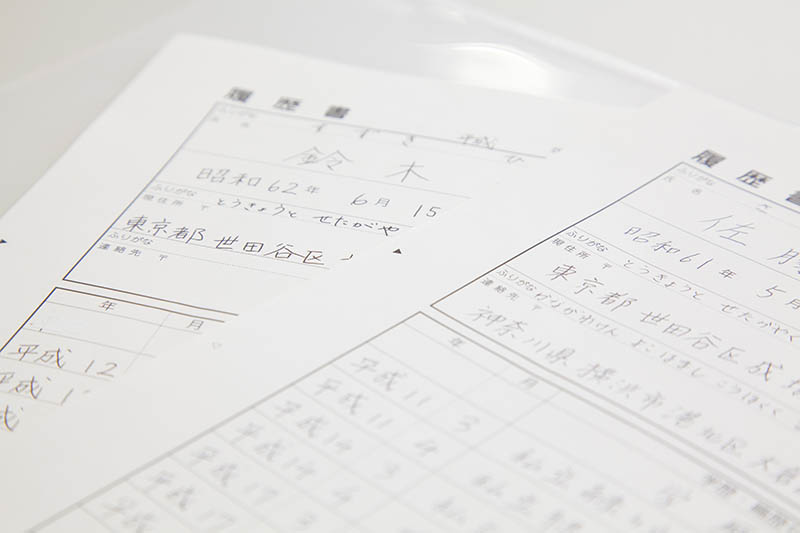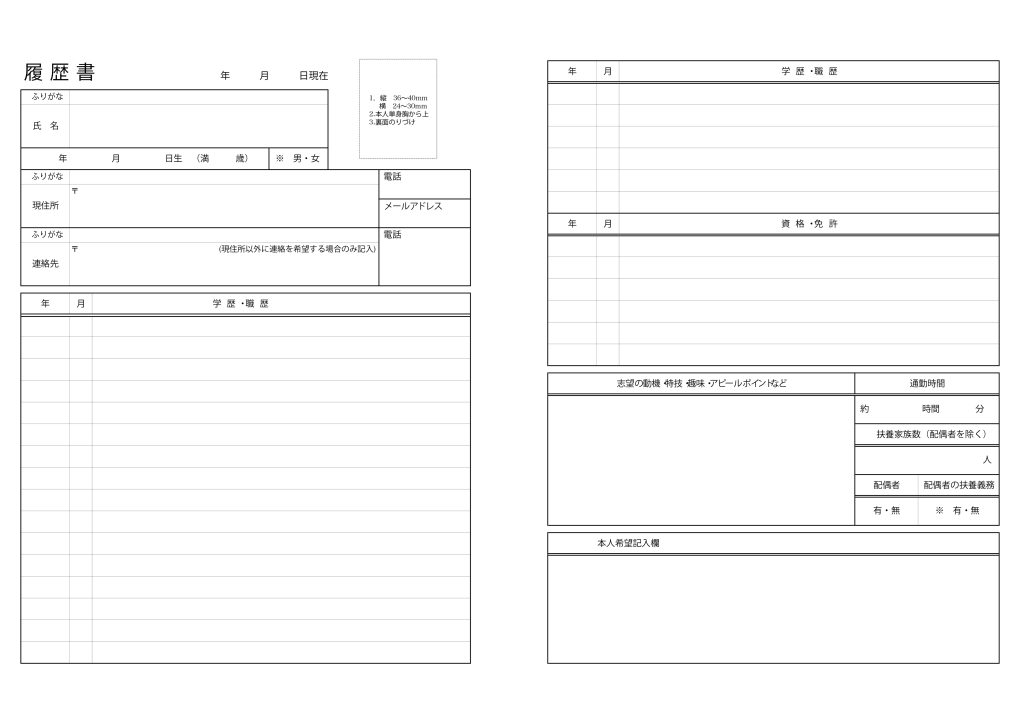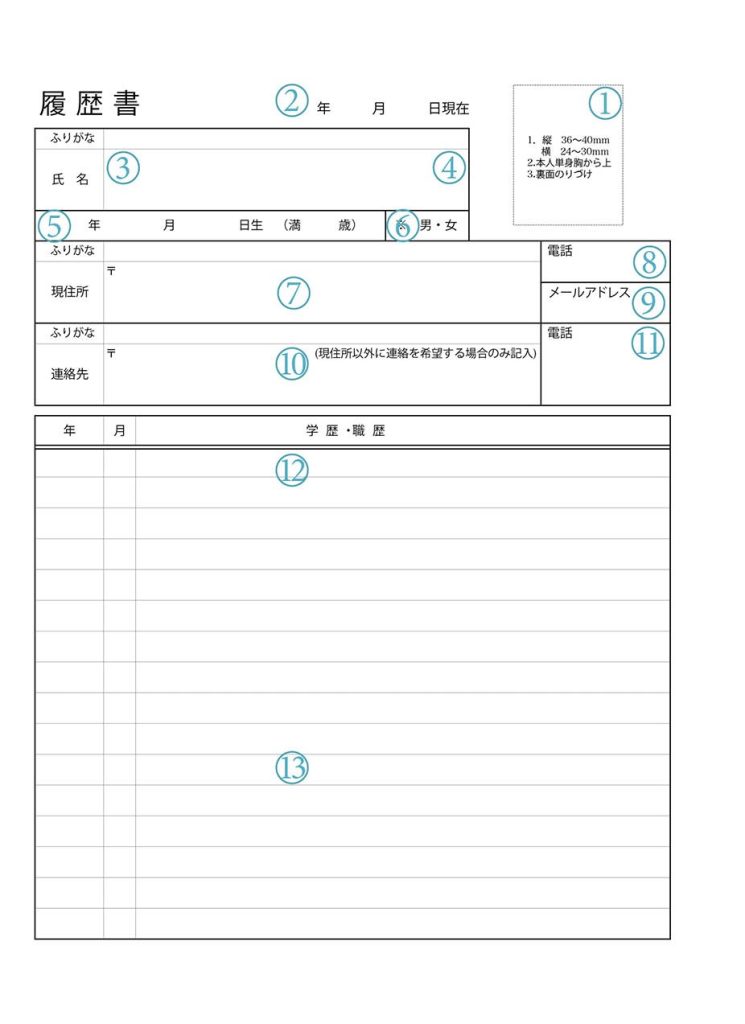
With an unemployment rate below 3%, Japan is nearing full-employment. There’s no field that is not lacking manpower and companies are now turning to foreign workers to bridge the gap between offer and demand. In only a few years, Japan became a real opportunity for those striving to launch an international career. However, each country has its own rules and particularities when it comes to job hunting and Japan is no exception: applicants will need to adapt their application and interview style as well as their CV (or resume).
[getpage file=”wordpress-shortcode/whitepaper-modal.html”]
CV in Japan
In most countries around the world, there are no specific rules when it comes to writing a CV, candidates have full control over it. It’s THE element that will allow an applicant to make a difference and appeal to recruiters. Nonetheless, it’s the complete opposite in Japan.
In Japan, a CV is called “Rirekisho” (履歴書) and it is highly codified since it has to answer strict norms, leaving little freedom for the applicant’s creativity, to the extent that you can find CV templates, ready to be filled, sold in convenience stores. As for foreign applicants, companies might be a bit more lenient when it comes to CVs, but in most cases, foreigners applying to Japanese companies will also have to stick to the traditional “rirekisho”.

Writing your CV in Japanese
Practice being the best of all instructors, you can download our template of a Japanese CV, created specifically for this article. We recommend you download and print it in an A3 or B4 format and use the description below to fill in each section.
▶︎ Get your free Japanese CV template

- 写真: This is the space provided for your picture. If you’re a man, wear a suit and a tie. Women only need to wear a suit. Even though it is usually recommended to stay neutral when taking these pictures, you can also try to differentiate yourself with a big smile, especially if you’re applying for a job in a shop, or any other place that requires you to interact directly with customers and clients.
- This is where you need to write the date of the day you apply. Even though it’s not a requirement, it’s usually recommended to follow the Japanese calendar system.
- 氏名: This is the space for your name. You can write it in romaji in the box usually made for kanji. Then, write it in katakana in the space made for furigana.
- 印 This space is made for your hanko.
- Your date of birth and your age
- Your gender
- 現住所 Your address in Japan
- 電話番号 Your phone number
- メールアドレス Your e-mail address
- 連絡先 The address where you would like your mail to be sent. Write 同上 if it’s the same as your main address
- 電話 The phone number at which you would like to be reached. Leave it blank if you want to use the same number you previously wrote
- 学歴 ・職歴 Write down 学歴 (Academic background)You’ll need to write your academic background first, in a chronological order, and usually from your last year of middle school.
- After skipping one line, write 職歴 (work experience). Then, fill the lines with all your working experiences, in a chronological order as well.
- 資格・免許 Qualifications and licenses. If you have additional diplomas, a driving license, and other certified qualifications, you can list them in this section. If you have a driving license, write it first and specify whether you’re allowed to drive in Japan or not. You can also list your foreign language diplomas here (JLPT, TOEFL, TOEIC, etc.)
- 志望の動機特技 You can use this space to write about your motivation for the job you’re applying for, but you can also use it to talk about your hobbies.
- 通勤時間 Fill that space with your commuting time as well as the stations you will use to commute to the workplace
- 扶養家族数 Use this space to specify the number of dependents in your household. Note that when he/she is working, you cannot count your spouse as a dependent.
- 配偶者 Are you married? If so, circle 有, if not, circle 無.
- 配偶者の扶養義務 Are you financially supporting your spouse? If so, circle 有, if not, circle 無.
- 本人希望記入欄(特に給料・職種・勤務時間・勤務地・その他についての希望があれば記入). If you have specific requests, such as the wage, the job type, working hours, work location, you can use this space to mention them.

Applying for a job in Japan: some tips
You’re about to apply for a job in a Japanese company and, to do so, you need to get your Japanese Curriculum Vitae. Here is some advice that could help you.
Should I print or hand write my Japanese CV?
There is no specific rule whether Japanese CVs should be typed or handwritten, but according to a survey, 30% of recruiters tend to prefer handwritten CVs, 10% of them like typed ones better and 51% have no preference. However, 70% of people who managed to get the position they applied for say that they have written their CV by hand. For a handwritten CV, use a black pen. Also, no matter how tempting it can be, do not ask your friends to write your CV because kanji may be a challenge for you. Recruiters will eventually find out that you didn’t write your CV yourself and this might backfire at you.
Gaps on a Curriculum Vitae
Just as in most countries, never leave unexplained gaps on your CV. If one or more years were to remain blank, your recruiters will most likely need you to account for them.
English proficiency in a Japanese company
If you speak English, make sure to mention it on your CV (if it’s not your mother tongue, you can also write your TOEFL or TOEIC scores on it). This will definitely turn into a benefit and can be a leverage to get a job in Japan, given the usually low level of English among Japanese people.
Lastly, while mailing your documents to a company, make sure to never fold them. Instead, use a large envelope and write 履歴書在中 (CV inside) on it. You can find them in book stores or convenience stores.
